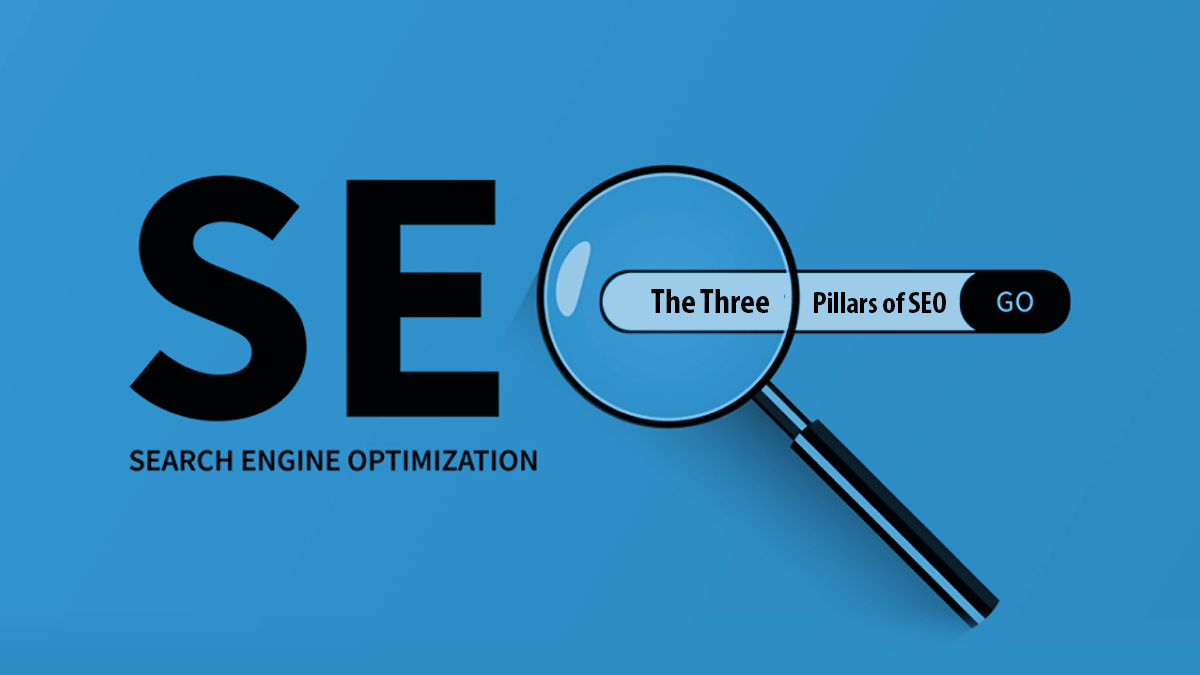Concentrating on these three pillars of SEO – technical, content and off page- will boost the effectiveness of your web site content, attracting more organic visitors over time.
While it’s not widely recognized, SEO is far from simple. It encompasses complex concepts, heavily depends on the over 200 ranking factors utilized by Google (which are only occasionally transparent), and requires continuous effort over an extended period of time.
This perception might make SEO appear daunting, leaving many businesses seeking clarity on the steps they need to undertake to improve their search engine rankings. As a result, they often abandon what has become a critical aspect of digital marketing.
However, it’s vital to take a moment to reflect. There are three pillars of SEO that form the backbone of search engine optimization. These pillars can be used to categorize all SEO tasks, and by understanding them, it can be seen that enhancing one’s online presence can actually be fairly straightforward.
SEO services proficiently utilize the three pillars of SEO – top-notch content, technical SEO, and powerful backlinking – to boost a website’s visibility and ranking in search engine results. In doing so, they stimulate the growth of organic traffic, enhance user engagement, and ultimately lead to higher conversion rates.
Pillar 1: Technical SEO
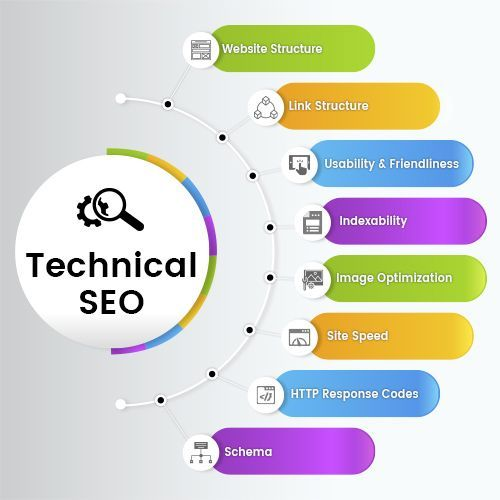
Technical SEO focuses on enhancing the technical aspects of your website to increase its visibility and ranking in search engine results. To ensure that search engines accurately understand and index your website, it’s crucial to optimize several key elements. By focusing on technical SEO, you can improve your website’s overall functionality and make it easier for search engines to find it quickly.
Therefore, the technical aspect of your website should be your top priority when crafting a robust technical SEO strategy. By addressing these technical specifics, you can set the stage for boosting site traffic and generating valuable leads. Let’s delve into some key strategies you can utilize to achieve these goals.
Website Speed and Performance Optimization
This involves optimizing the code and images on your website, ensuring swift server responses, and taking measures to expedite the loading of your web pages.
A fast-loading website benefits both users and search engines. Users prefer quick-loading sites for a superior user experience and easy access to information or products. Search engines, on the other hand, favor speedy websites due to their user-friendly nature and improved crawling and indexing capabilities, thereby increasing their chances of achieving high rankings.
To boost your website’s speed and performance, you can employ techniques such as image compression, minification and combination of CSS and JavaScript files, browser caching, and the use of content delivery networks (CDNs). By enhancing your site’s speed, you can improve user experience and increase the likelihood of search engines prioritizing your site in search results, resulting in satisfied customers and increased organic traffic.
Mobile-Friendliness and Responsive Design

In today’s world where mobile devices are prevalent, it’s essential to ensure your website is responsive and mobile-friendly. A mobile-friendly website functions and appears seamlessly on both tablets and smartphones. Responsive design ensures that your website automatically adjusts and fits perfectly on screens of varying sizes, be it a small phone screen or a larger tablet display.
The importance of having a mobile-friendly website is manifold: it enhances user experience, encourages visitors to stay longer and explore more, and appeals to search engines. Users prefer mobile-friendly websites as they are easier to navigate, read, and interact with on mobile devices. Moreover, search engines often award mobile-friendly websites with higher rankings in their search results.
If your website isn’t responsive to mobile devices, it may be ranked lower, making it more challenging for users to find you. Ensuring your website is responsive and mobile-friendly not only improves user experience but also increases the likelihood that it will feature prominently in search engine results.
Having a responsive and mobile-friendly design is crucial in today’s mobile-dominated market. It not only provides a seamless user experience but also enhances your visibility in search engine results.
Indexing and Crawling Optimization

Optimizing the indexing and crawling process is crucial to ensure that search engines can accurately explore and categorize the content on your website. This involves employing various strategies to make it easier for search engines to understand your site’s organizational structure and the relationships between its different components.
One way to accomplish this is by creating a website structure that is simple and well-organized. Think of it as drawing a clear roadmap for search engines to follow. Establishing logical categories for your pages and leveraging hierarchical structures, such as menus and submenus, provides search engines with a clear route through your website.
By optimizing internal linking, search engines can follow the network of connections to locate and access important content. Moreover, it helps establish the relevance and significance of the different pages on your website. It’s crucial to avoid duplicate content, as it can confuse search engines when determining which version is most relevant, potentially lowering your visibility and ranking potential.
By eliminating duplicate content, search engines can effectively index and understand the unique value of each page. By implementing these strategies, you can enhance crawling and indexing, thereby improving your search rankings and increasing your visibility to users seeking relevant information.
XML Sitemaps and Robots.txt Files

When search engine crawlers visit your website, XML sitemaps and robots.txt files serve as welcoming maps for them. Imagine the XML sitemap as a master list that contains all of the URLs (internet addresses) for your web pages. It is easier for search engines to index your pages in their search results when they can simply identify and comprehend the structure of your website, thanks to an XML sitemap.
The robots.txt file, on the other hand, is similar to a set of instructions for search engine crawlers. It advises them on which areas of your website they should visit and which they should avoid. You may direct search engines’ attention to the most relevant portions of your website by correctly setting and optimizing the robots.txt file. This guarantees that the quality sites and information you want to index and show in search results get the attention they deserve.
To summarize, XML sitemaps and robots.txt files are essential tools for search engines to explore better and comprehend your website. They increase the likelihood of your web pages being discovered, indexed, and prioritized in search engine results, enhancing your website’s visibility and exposure.
Structured Data and Schema Markup
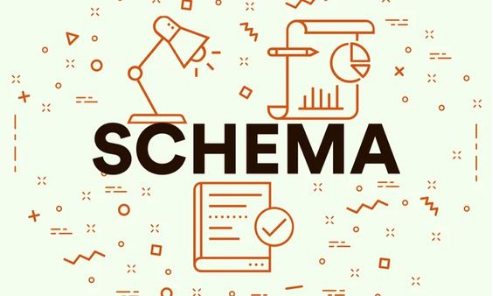
Adding structured data and schema markup to your website can be likened to using a secret code to help search engines understand the context of your content. Essentially, structured data provides search engines with extra information about the specifics of your products, services, blog posts, and other types of content on your website.
With this enhanced understanding of your content, search engines can generate more detailed and visually appealing results for users. We call these enhanced search results “rich snippets.” They can include information like product prices, event dates, event times, and even star ratings.
These rich snippets grab the attention of visitors and can entice them to click on your website instead of your competitors’ when they appear in search results. This can enhance your website’s visibility in search engine rankings and boost your click-through rates.
By using structured data and schema markup, you’re giving your website a greater chance to stand out in search results and attract more visitors. Therefore, consider adding this additional layer of information to your website to improve its visibility and drive more traffic to it.
Also Read: On-SERP SEO and Why it Is The Future of SEO
Pillar 2: Content Strategy

Understanding the importance of creating valuable and high-quality content is crucial in terms of content strategy. Whether it’s for a website, blog, or social media platform, content forms the bedrock of any online presence. In addition to helping you attract and engage your target audience, quality content also aids in establishing trust and authority within your industry. It forms the foundation for building a robust online presence and cultivating a deeper connection with your audience.
Understanding Search Intent
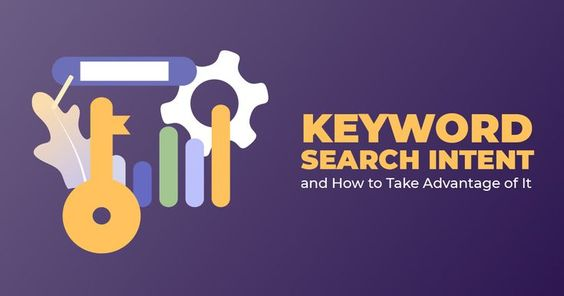
Understanding what people genuinely want when they search online is crucial when developing your content strategy. We call this “search intent.” It essentially comes down to determining the motivation or goal behind a searcher’s query.
Search intent is all about comprehending the objectives and driving forces behind people’s internet searches. Knowing what people are looking for allows you to create content that addresses their needs, concerns, or questions. By offering relevant and valuable content, you not only respond to their search queries but also earn favor with search engines.
Also Read: People Also Search For Box – How PASF Works?
When search engines recognize that your content aligns with people’s search intent, they are more likely to rank your pages higher in search results. This is excellent news as it means more people will discover and visit your website. Moreover, your target audience is more likely to share, link to, and revisit your content when it resonates with them.
Understanding search intent is useful for tailoring your content to your audience’s specific needs. This increases your chances of appearing in search engine results and attracting organic traffic (people who find you on their own without the use of paid ads). It’s a win-win situation for both you and your viewers!
Write for E-A-T
E.A.T. stands for Expertise, Authoritativeness, and Trustworthiness. Google uses this concept to evaluate the quality and reliability of web content. Essentially, when you’re creating content, it’s crucial to showcase your expertise in the subject matter, establish yourself as an authority in your field, and build trust with your audience.
To achieve this, you must present accurate facts, cite reliable sources, and demonstrate your knowledge and experience. By producing content that emphasizes these characteristics, you can improve your search engine rankings and position yourself as a dependable and trustworthy source of information.
So, the next time you’re creating content, keep E-A.T. in mind. Build trust with your audience by showcasing your expertise and asserting your authority. It’s a win-win scenario because you’ll rank higher in search engine results and be recognized as a reliable source of information.
Internal linking
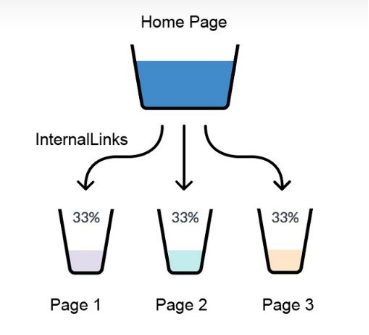
Internal linking involves connecting various web pages and pieces of content on your website. It’s akin to constructing roads or pathways that lead users from one section to another, a practice vital for content strategy.
- Internal links assist search engines like Google in better understanding the structure of your website. It’s comparable to providing them a map that outlines the connections between the pages. This eases the task for search engines to crawl and index your website, potentially increasing the chances of your site appearing in search results.
- Internal linking is excellent for website visitors as it simplifies navigation through your site and aids in finding relevant content. For instance, if you’re reading an article and encounter a link to a related topic on the same website, clicking on that link will direct you to another page with more information on your topic of interest.
By encouraging users to explore more of your website, you can maintain their interest and decrease the bounce rate—the percentage of visitors who exit your site immediately after viewing only one page.
- Internal links can support a concept known as link equity. This refers to the “voting power” that links possess. When your site has internal links pointing to relevant pages, it’s akin to giving those pages a visibility and ranking boost. This signals to search engines that these pages are significant and should be considered when determining search results.
Therefore, by strategically establishing internal links to these pages, you can enhance the chances that your key pages will be noticed and ranked higher in search engine results.
Leverage Different Types of Media
In today’s digital landscape, it’s crucial to use a variety of media to maximize the impact of your content strategy. While text is valuable, you need to go beyond words to engage your audience and provide them with a superior user experience. Visuals, videos, and interactive elements can significantly enhance a piece of content.
Compared to plain text, an image or video is much more effective at capturing and sustaining attention. It’s more memorable and stimulating. By using various multimedia formats to convey your messages, your content becomes more intriguing, persuasive, and shareable.
Another benefit is that people learn and absorb information differently. Some are visual learners, while others prefer watching videos or interacting with interactive elements.
Therefore, don’t limit yourself to just text. Harness your creativity to enhance your content strategy by incorporating photographs, videos, infographics, and other multimedia elements. This approach will make your content more engaging, compelling, and effective at communicating your message to your audience.
Pillar 3: Off-Page Elements
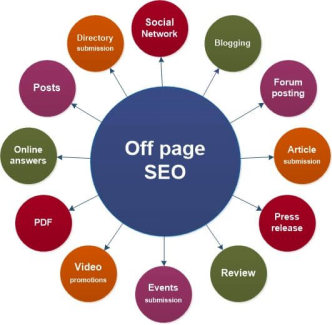
Unlike on-page optimization, which focuses on what’s happening on your website, off-page factors center on external influences that can affect your site’s ranking.
In other words, while on-page SEO involves managing your website’s content, structure, and keywords, off-page SEO is about establishing your site’s credibility and popularity on the rest of the web.
Off-page SEO illustrates that your website is recognized and trusted by others, in addition to being well-optimized internally. When other websites link to yours, it’s a vote of confidence, indicating that they believe your content is valuable and worth sharing. Search engines consider these endorsements when assessing the authority and relevance of your website.
Off-page SEO involves building relationships, garnering mentions, and earning links from reputable websites to enhance your site’s reputation, visibility, and search engine rankings. It’s about promoting your website and creating a reliable online presence for improved search engine performance.
Also Read: SEO Tips- Guide To Cross Linking
Building Backlinks: Strategies for Success

Building backlinks, a crucial aspect of off-page SEO, will be the main focus. Backlinks are links from other websites that point to a particular website. Their importance stems from their capacity to increase visitors to the desired website and communicate to search engines that the site is trustworthy and deserving of higher ranks. Effective methods for getting high-quality backlinks include the ones listed below:
- Guest Blogging and Article Submissions: Writing excellent posts as a guest blogger and sending them to well-known websites in your area is a terrific strategy to gain backlinks. You can connect back to your website when you contribute worthwhile information to these websites, which not only allows you to demonstrate your knowledge. This might draw visitors and raise the authority of your website.
- Social Bookmarking and Directory Submissions: Utilizing social bookmarking websites like Reddit, Digg, or StumbleUpon is another tactic. Bookmark and share your website or blog entries using these sites. You may improve traffic to your website and its visibility by doing this. Additionally, adding your website to pertinent online directories can improve your online visibility and aid search engines in determining the target audience for your website.
- Influencer Outreach and Relationship Building: Working with influential people in your field can change the game when it comes to gaining high-quality backlinks and growing your audience. You can tap into their following and increase visibility to more potential visitors by developing ties with influencers through guest articles, interviews, or sponsorships. Influencers’ mentions or links can significantly increase your website’s credibility and drive worthwhile traffic.
These tactics are about building relationships, producing useful content, and displaying your skills to acquire those priceless backlinks. Remember that the quality of the backlinks is more important than the quantity. You’ll reap the rewards in the form of more visibility and better search engine results, so concentrate on developing relationships and adding value.
Managing Online Reputation and Brand Mentions

Maintaining a positive online reputation is critical for your brand. This involves monitoring what customers are saying about your brand and responding to any negative comments. By proactively addressing negative reviews or comments and fostering a positive relationship with your audience, you can defend and even enhance your brand’s image.
Having a positive online reputation lays a solid foundation for your brand. It not only keeps your existing customers happy but also builds trust and credibility with potential clients. When people search online, they often come across reviews, comments, or other mentions of your brand. If most of these are positive, it creates a good impression and increases the likelihood that people will choose your brand.
Negative comments or reviews can quickly damage your brand’s reputation, making it essential to monitor and manage your online reputation. Regularly check for negative comments on review sites, social media platforms, and other online outlets. When someone criticizes you, respond promptly and courteously. Address the issues, offer solutions or apologies, and show that you are dedicated to resolving problems. This not only demonstrates superior customer service but also assures prospective clients of your responsiveness and commitment.
Managing your online reputation involves more than just responding to negative comments. Encourage satisfied customers to leave reviews, interact with followers on social media, and actively cultivate a vibrant online community to promote positive interactions. By regularly monitoring, actively participating, and prioritizing customer satisfaction, you can safeguard and enhance your brand’s reputation, fostering trust and loyalty among your target audience.
Harnessing Social Media Signals and Engagement

Social media has been a game-changer for off-page SEO. By actively engaging with your audience on platforms like Facebook, Twitter, and Instagram, you can generate beneficial social signals. Actions like likes, shares, and comments send signals to search engines, indicating that your content is valuable and worth ranking higher.
Social media is a potent off-page SEO strategy. To fully realize its potential, create captivating, shareable content that grabs people’s attention and compels them to share it. Actively participate in discussions, respond to comments, and show genuine interest in your audience’s opinions and suggestions. Building a dedicated social media following is equally important.
Search engines take note when you have a committed following that regularly interacts with your content and rewards your brand with higher search rankings. Therefore, to amplify the effects of your off-page SEO efforts, embrace social media, create excellent content, and establish a robust online presence.
Conclusion
Quality content, strategic keyword usage, and robust backlinking constitute the three pillars of SEO essentials crucial for online success. It’s critical to implement all three aspects as they work together to enhance visibility, increase organic traffic, and cultivate a strong reputation.
In today’s competitive digital world, investing in SEO is paramount. By giving SEO strategies a high priority and allocating resources to them, both businesses and individuals can position themselves for long-term success online. It’s a measured approach that offers substantial benefits and allows for effective navigation of the ever-evolving digital landscape.
To sum up, prioritize and invest in SEO to enhance your online presence. By focusing on high-quality content, smart keyword application, and efficient backlinking, you can amplify your website’s visibility, attract organic visitors, and ultimately achieve success online.
FAQs
How can off-page optimization benefit from social media marketing?
Social media marketing aids in boosting brand recognition, generating referral traffic, and engaging the intended demographic. Off-page SEO efforts can be improved by encouraging social sharing and content promotion on social media platforms, which can result in more backlinks and online mentions.
Do local and traditional SEO differ from one another?
Yes, local SEO focuses on making a website more prominent in local search results, especially for location-based searches. It entails maintaining online reviews, getting local citations, optimizing Google My Business listings, and focusing on location-specific keywords. On the other hand, traditional SEO emphasizes a broader organic search presence without a clear local objective.
What function does content serve in SEO?
User engagement and search engine comprehension depend heavily on content. It satisfies user intent, contains targeted keywords, draws backlinks, and raises a site’s visibility and search ranks.
How long does it take for SEO efforts to produce results?
Search engines take time to crawl, assess, and reflect changes; thus, SEO results can vary. Results typically take weeks or months to show, depending on the level of industry competition and algorithm upgrades.
